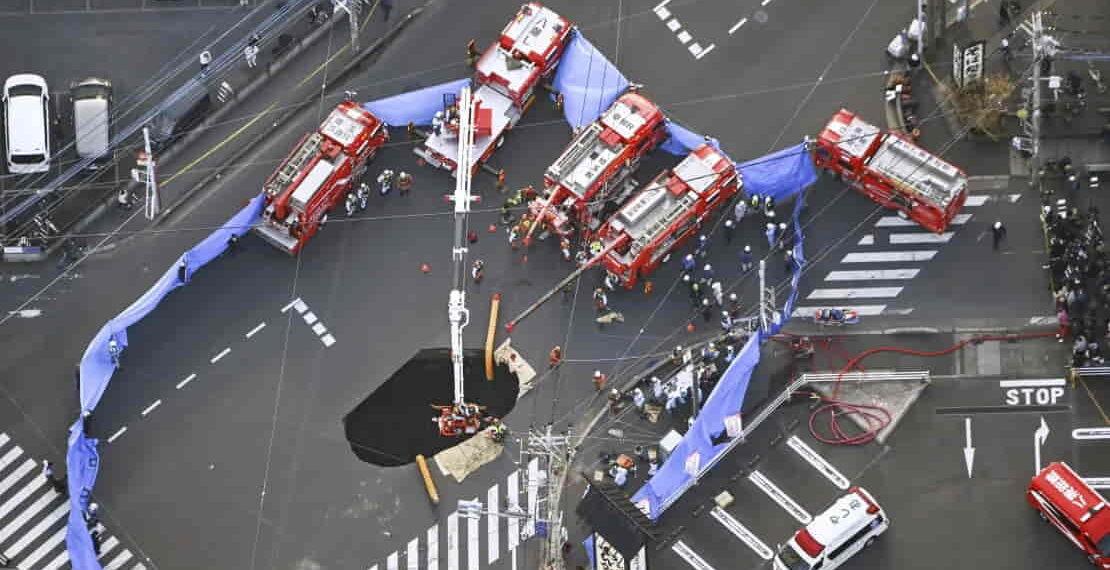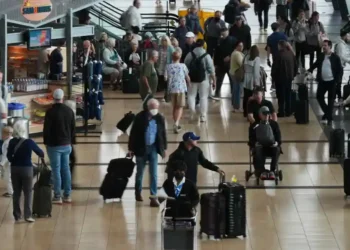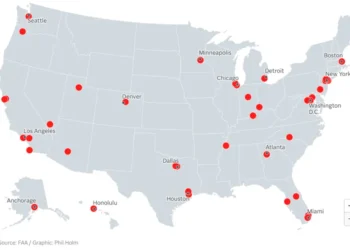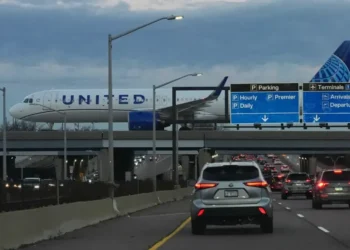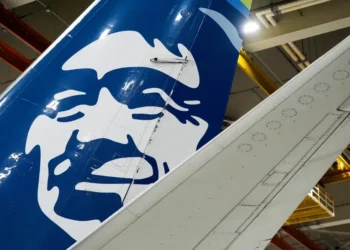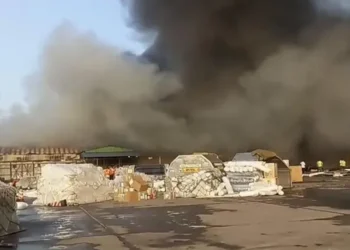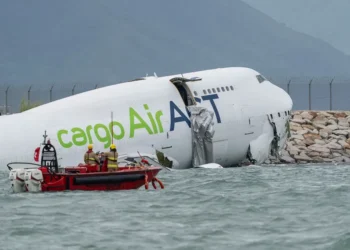Truck Driver Trapped in Sinkhole Near Tokyo as Rescue Efforts Continue
A truck that plunged into a sinkhole near Tokyo has sparked national concern as rescue efforts to free the 74-year-old driver continue. The incident has highlighted issues surrounding Japan’s aging infrastructure and raised fears of flooding and sewage leaks in the surrounding areas.
What Happened?
On Tuesday morning, a sinkhole suddenly appeared on a road in Yashio City, located just northeast of Tokyo. The hole, initially 10 meters (33 feet) wide and 5 meters (16 feet) deep, quickly grew to double its size, swallowing a 3-ton truck.
The Driver’s Condition
The driver, a 74-year-old man, was initially conscious and communicating with rescue workers, but has since failed to respond since Tuesday afternoon. Yoshifumi Hashiguchi, an official from the Yashio fire department, confirmed that the man is believed to be trapped in the truck’s cabin.
Cause of the Sinkhole
Authorities have speculated that corrosion in a sewage pipe, possibly caused by strong acid regularly flowing through it, led to the formation of a hole in the pipe. This caused the soil above to collapse, creating a large hollow space beneath the road. While the pipe had passed its last visual inspection just five years ago, officials believe that the damage may have been overlooked.
Leaking sewage water from the damaged pipe has raised concerns about possible flooding in the area.
Why Is the Rescue Taking So Long?
The unstable ground is complicating the rescue efforts. Television footage captured the road cracking and collapsing further, with billboards toppling into the sinkhole. Authorities have attempted to use cranes to lift the truck, but so far, only the loading platform has been recovered, leaving the driver’s cabin intact, where the driver is believed to still be trapped.
Efforts to remove sediment and dig down to reach the driver have been unsuccessful. Rescue teams also attempted to send a drone into the hole to assess the situation, but no significant progress has been made.
Impact on the Community
Nearby residents have been advised to reduce their water consumption as authorities work to prevent sewage overflow into the sinkhole. Road closures have been enforced, and 20 residents within a 200-meter radius of the hole have taken shelter at a local junior high school as a precaution.
Saitama prefecture, where the sinkhole occurred, has asked over one million residents—especially those in areas connected to the sewage pipe—to cut back on activities like laundry and bathing to minimize strain on the system. To manage the situation, officials have started to divert sewage from an upstream pumping station and treat it before releasing it into a nearby river.
Next Steps
Once the driver is rescued, experts will enter the sinkhole to examine the damaged sewage system.
In response to the incident, Japan’s Land, Infrastructure, and Transport Ministry has ordered a nationwide inspection of all sewer systems. The sinkhole has raised alarm about the aging infrastructure in a country known for its vulnerability to natural disasters. Many of Japan’s key public infrastructure systems were built during the country’s rapid economic growth in the 1960s and 1970s. The damaged pipe in Yashio, for example, is about 40 years old.
This incident has sparked a broader discussion about the ongoing need for infrastructure upgrades in Japan to prevent similar situations in the future.
This article was rewritten by JournosNews.com based on verified reporting from trusted sources. The content has been independently reviewed, fact-checked, and edited for accuracy, neutrality, tone, and global readability in accordance with Google News and AdSense standards.
All opinions, quotes, or statements from contributors, experts, or sourced organizations do not necessarily reflect the views of JournosNews.com. JournosNews.com maintains full editorial independence from any external funders, sponsors, or organizations.
Stay informed with JournosNews.com — your trusted source for verified global reporting and in-depth analysis. Follow us on Google News, BlueSky, and X for real-time updates.
